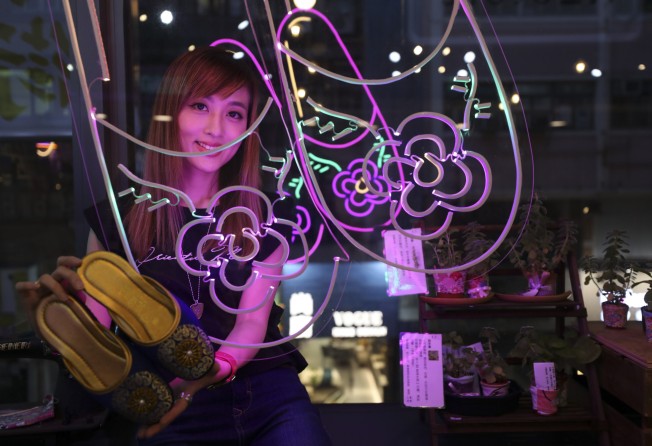
Custom shoes for the Mid-Autumn Festival? Hong Kong craftswoman keeps the dying traditional art of hand-embroidered shoes alive with workshops
- Hand-embroidered slippers, not mooncakes, used to be a popular item to give to elderly family members during the Mid-Autumn Festival
- Miru Wong keeps the traditional art alive in Hong Kong with Cantonese embroidery workshops that teach designs for slippers, high heels, flip-flops and more
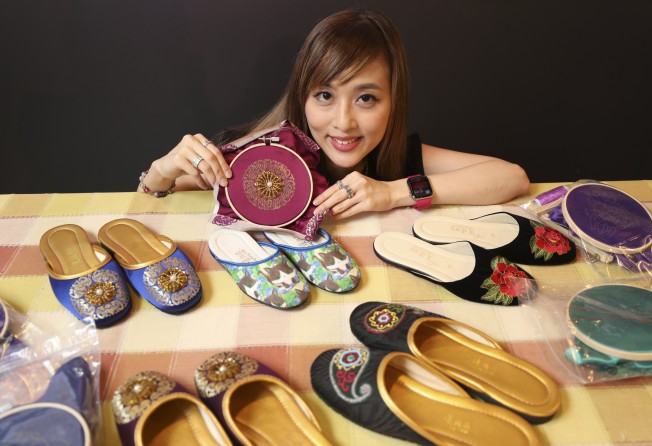
Around the world, traditional crafts are falling victim to technology and globalisation. In Hong Kong, Miru Wong Ka-lam is doing her bit to keep the art of hand-embroidered shoes alive.
Wong’s shop, Sindart, in Jordan, Kowloon, is one of just a few in the city to have survived the industry’s shift to mainland China, with its cheaper labour costs and mass-manufacturing capabilities.
To share her skills, the third-generation owner of the 63-year-old small business holds weekly workshops for people keen to learn the vanishing art of Cantonese embroidery.
One of the designs students learn is a marigold and moon bead embroidery, which traditionally represents the Mid-Autumn Festival.

“The marigold in the middle signifies the full moon during the Mid-Autumn Festival, while the bats circling the marigold signify luck. This is because, in Chinese, the words ‘bat’ and ‘luck’ sound similar. There are five bats, because in Chinese culture, five blessings are considered extremely auspicious,” Wong explains. “This design is usually embroidered on either a black or a blue background, the colours of the sky behind the moon.
“When family members gather for dinner during the Mid-Autumn Festival, they exchange gifts. Hand-embroidered slippers used to be a popular item to give to elderly members of the family.”

Unfortunately, the practice is now less common. “When my grandparents started the shop in the 1950s, there were a lot more orders for embroidered slippers. Now, it seems Hongkongers are more focused on buying mooncakes,” Wong says.
Easy access to cheaper, machine-embroidered slippers manufactured in China is another threat to the traditional craft’s survival in one of the world’s most expensive cities.
Wong, however, firmly believes that handmade and hand-embroidered slippers are of a better quality than the mass-produced variety. “Machine-made slippers feel different than handmade ones,” she says. “The material is too soft, making the slippers uncomfortable.”
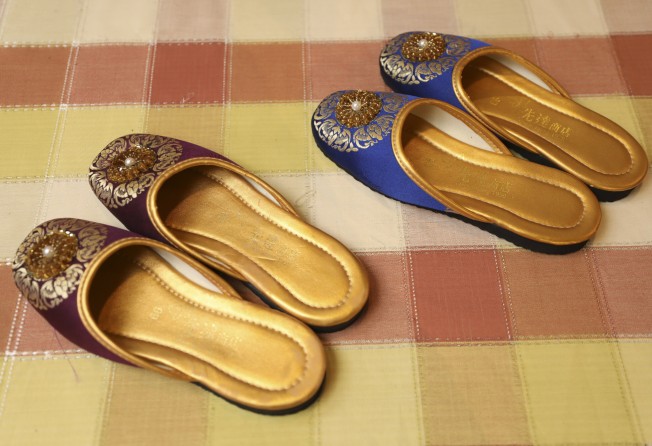

One element that differentiates Sindart’s intricate slippers is the range of designs that are available.
“My late grandfather, Wong Tat-wing, who established Sindart in 1958 in a tiny shop under a staircase on Nathan Road, created his own embroidery designs in the 1950s,” Wong says.
She aspires to revive the tradition of Cantonese-style embroidered slipper making by adding modern elements and making footwear that is appropriate for everyday use.
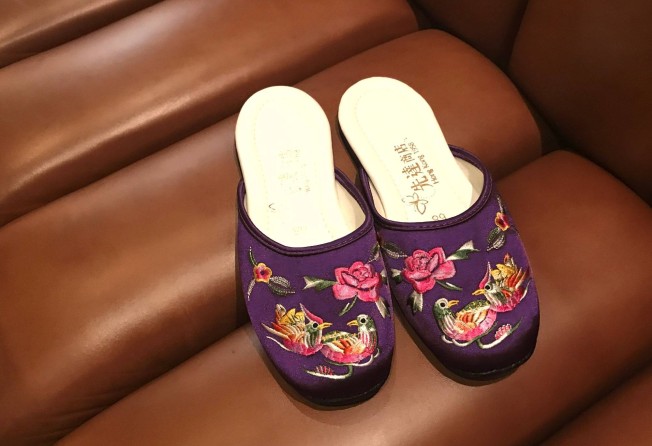
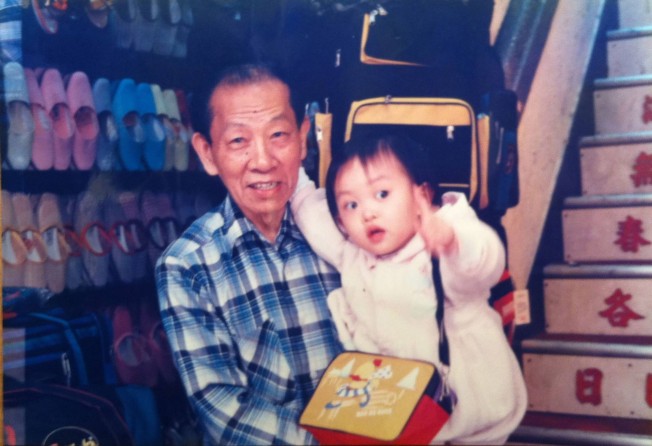
“This includes applying Cantonese-style hand embroidery to not only slippers, which is the tradition, but also to high heels and even flip-flops. I studied shoemaking to be able to do this,” she says.
The workshops are open to everyone, and are held each week at Restore, 618 Shanghai Street, Mong Kok. English speakers are welcome to join. For more information, visit facebook.com/sindart1958.